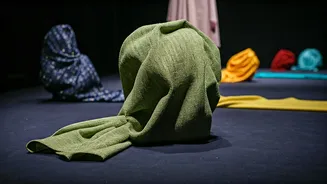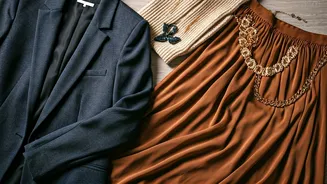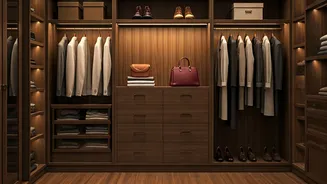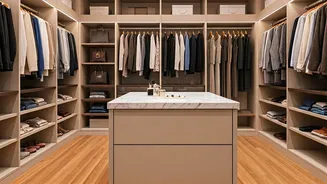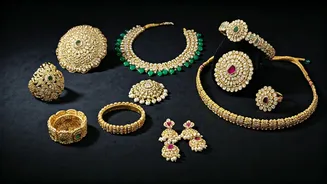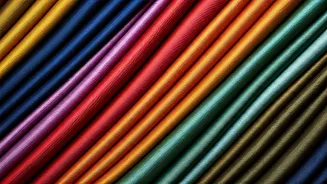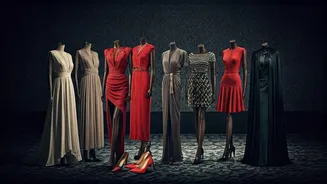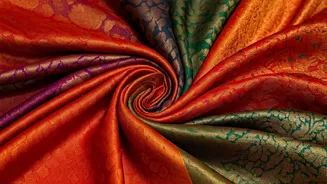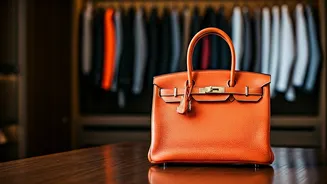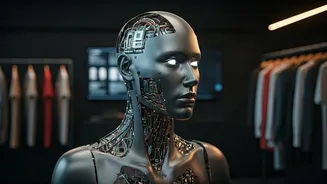Current Fashion Landscape
The fashion industry is currently a dynamic mix of influences. Sustainability is a major force, with brands adopting eco-friendly materials and practices.
Vintage and upcycled clothing are popular choices, aligning with the growing desire for unique and responsible fashion. Minimalism remains prominent, with clean lines and neutral colors dominating many collections. However, maximalism is also experiencing a resurgence, with bold prints, vibrant colors, and statement accessories. Athleisure continues to be strong, showing how functional clothing has become a fashion staple, whilst the growing influence of social media contributes to rapid trend cycles and the rise of micro-trends.
Emerging Styles Explained
Several specific styles are gaining momentum. The 'quiet luxury' aesthetic is marked by understated elegance, premium materials, and subtle branding. This trend reflects a shift away from overt displays of wealth. Y2K fashion, drawing inspiration from the early 2000s, is making a comeback, featuring low-rise jeans, crop tops, and bold accessories. There is also a strong influence from diverse cultures, as designers incorporate global patterns, fabrics, and silhouettes into their creations. This can be seen in everything, from the revival of traditional Indian embroidery to the rise of African prints on the international runways. Gender-fluid fashion continues to blur traditional lines, with more designers creating clothing that transcends gender norms and promotes inclusivity.
Material Innovations Explored
Fashion is increasingly reliant on material innovations. Sustainable materials are becoming more widespread. Recycled fabrics, organic cotton, and innovative plant-based leathers are being utilized to reduce the environmental impact of production. Fabrics that incorporate technology are also emerging. Smart textiles with integrated sensors can track health data or even control the wearer's environment. 3D-printing is transforming design, allowing for customized clothing, waste reduction, and the creation of complex shapes. These innovations are reshaping the way designers create and consumers interact with garments, presenting exciting opportunities for future development in the industry.
Influences and Drivers
Various factors are influencing current fashion trends. Social media plays a massive role, with platforms like Instagram and TikTok driving trends, and fueling quick changes in style. Celebrities and influencers have a considerable impact on what people wear, as their choices often go viral and influence consumer behavior. Economic conditions shape the fashion market. Economic downturns may lead to greater demand for affordable fashion and minimalist styles. Cultural events like film releases and music festivals inspire collections, and collaborations between designers and artists are becoming more common, which leads to creative and innovative pieces. This cross-pollination of ideas keeps fashion dynamic and responsive.
Fashion's Future Forecast
Predicting the future of fashion involves multiple elements. The use of technology is likely to increase, with virtual fashion and digital clothing gaining more importance. Augmented reality may change how consumers purchase, allowing virtual try-ons and personalized experiences. Customization will become increasingly popular, with consumers seeking clothing that perfectly fits their needs. The focus on sustainability will continue to grow, as consumers demand more responsible production and eco-friendly practices. A blend of high fashion with streetwear, and the emphasis on body positivity, diversity, and inclusivity, will promote a more varied and democratic industry.
Consumer Impact Examined
Fashion trends influence consumer behavior in a wide variety of ways. Consumers are more aware of the environmental and social impacts of their choices, leading to a rise in demand for sustainable and ethical brands. The rise of social media and online shopping has empowered consumers, giving them greater access to a wider variety of styles and trends. The quick pace of trends leads to fast fashion, while consumers may get tired of their clothes quickly. Increased interest in personal style leads to mixing and matching trends, developing unique self-expression. This dynamic shifts the focus from following trends to finding individual style.
